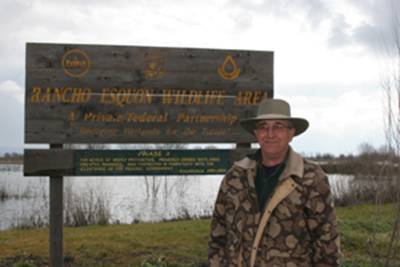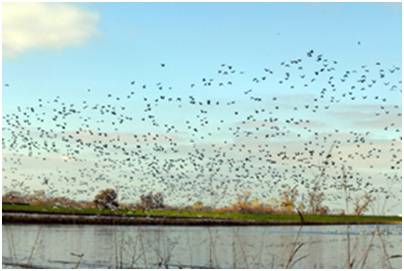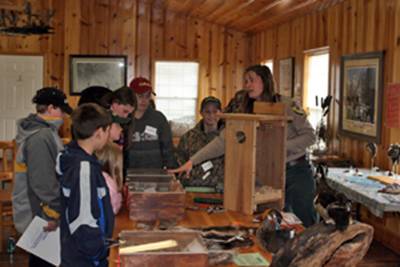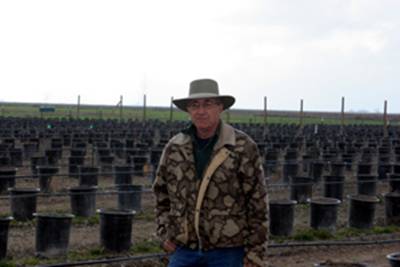
Larry Merlo Keeper of the Ducks
by Bill Mays
Wing and Clay Editor
When duck clubs first started in the North Sacramento Valley Larry Merlo was head and shoulders above everyone else. With the training and guidance from his cousin Pete Merlo, Larry Merlo, only in the sixth grade fell in love with all the aspects of waterfowl hunting and preserving its habitat has been his lifelong ambition.
“Pete was babysitting me and my cousins, and would take us with them to hunt ducks,” said Larry Merlo. “They not only did Pete baby-sit us, Pete and his hunting partners would put us to work, building blinds, set decoys, picking ducks, and anything thing else they could find for us to do.”
“I fell in love with duck hunting the very first time in the field,” said Merlo. “I’d watch Pete and his hunting partners call them ducks, and they could pull ducks from a flooded field and bring them over to a dry field and shoot em’.”

Larry Merlo—is truly an Icon in the waterfowl world. He has managed some of the best waterfowl clubs in Butte Sink and has had a big impact on the waterfowl habitat.
Larry Merlo grew up hunting the Bearing Ranch; Pete was the farming operation manager for the hunting rights. He taught Larry how to hunt, how to call ducks, the duck club business, and everything to do with wildlife.
“I had the best teenage years a teenager could have, thanks to Pete,” said Larry Merlo. “We worked hard and we hunted hard.”
When rice farming started in the valley and the natural habitat was going away, the Merlo’s could see they had to make a change. Pete went to the Finn Ranch and Larry went to Lano Seaco and the M&T Ranch. Between the ranches they tied up 31,000 acres and produced some of the best duck hunting in the north state.

Larry Merlo stayed on Lano Seaco and the M&T Ranch until his one son Rocky came home from hunting a piece of property along Butte Creek. With Rocky coming home with limit after limit of ducks, Larry started getting curious and went to check out this piece of property. He liked it so much he made a change and paid hard cash for the hunting rights.
“I don’t know why I made the change, my piece of property was just as good at that time, I had the lease on Lano Seaco, and the M&T ranch, just something told me to make the change, so I did,” said Merlo. “The rest is history, if I had not leased Rancho Esquon I never would have met Ken Hoffman and I would have never had the opportunity to become the wildlife manager of Rancho Esquon.”
Hoffman was looking for a good piece of duck property to build his dream duck club and sanctuary and heard of Merlos property. He approached Merlo and said he wanted to buy the property and, if he did, would Merlo be interested in managing the wildlife area of the ranch.
“When I first met Ken Hoffman, I knew he had the same love and passion for waterfowl, just as I’ve always had deep down inside,” said Merlo. Working for Hoffman as the wildlife manager, Merlo has had the financing and backing to manage not just Rancho Esquon but also the famous Berry Patch, Piper’s Patch, 3 of the top gun clubs and waterfowl sanctuaries in the western flyway.
Rancho Esquon is more of a sanctuary than a gun club. The main purpose of the ranch is to constantly improve the duck habitat for this generation and for generations to come. There are only 8 blinds in the 1,000-acre sanctuary section of the ranch and 10 blinds in the rice fields. Guest hunters are only allowed to shoot 5 ducks on the property and the ranch holds one big youth hunt every year.

Rancho Esquon—supports many hands on youth programs on the facility.
The 7,000-acre ranch is a self-sufficient working rice ranch. On the ranch they plant 2,000 willow cuttings every year to enhance the habitat and the water is regulated for the duck habitat year round.
Hoffman and Merlo are big supporters of the Mallard Legacy egg recovery program and have an incubation hatchery on the ranch. Volunteers go into the rice fields and duck eggs are picked up by hand before the harvesting equipment is sent into the fields. The eggs are then sent to the incubation hatchery, hatched out, and held in holding pens for 5 weeks before being banded and released in the wild all over California.
Rancho Esquon also has a successful wood duck recovery programs. Wood duck eggs take special handling and habitat after hatching, and Rancho Esquon has the facility for a successful incubation and survival rate. When the ducklings are hatched out at 5 weeks old they to are The eggs are then sent to the incubation hatchery, hatched out, and held in holding pens for 5 weeks before being banded and released in the wild all over California.
Rancho Esquon also has a successful wood duck recovery programs. Wood duck eggs take special handling and habitat after hatching, and Rancho Esquon has the facility for a successful incubation and survival rate. When the ducklings are hatched out at 5 weeks old they are banded and distributed throughout the state.
There is a regulation trap and skeet range on the ranch to assist in teaching youth hunter’s gun safety. Hoffman had an all brick building built, so Ducks Unlimited and California Waterfowl and school students from all over the state had a building for educational purposes on the ranch.

Larry Merlo—hand planted hundreds of willow trees on the Rancho Esquon Wildlife Area
With the teamwork of ranch manager Rick Ponciano, wildlife manager Larry Merlo, and the passion for wildlife and financing of owner Ken Hoffman, Rancho Esquon is one of the jewels of the western flyway. What this ranch does for waterfowl can’t even be measured in terms, for this generation and generations to come.